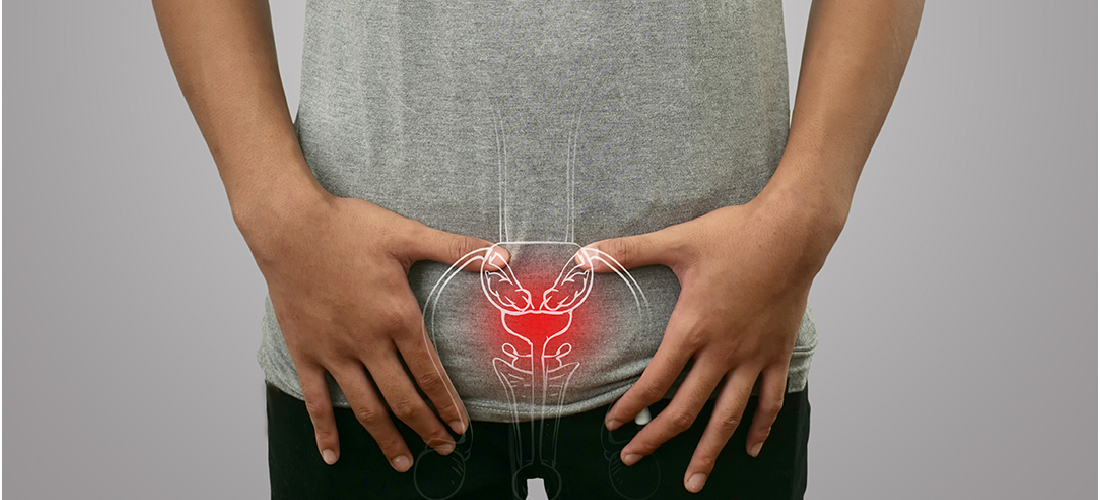Prostatic Artery Embolization:
What to Expect After Treatment

If you’ve undergone or are considering Prostatic Artery Embolization (PAE) for benign prostatic hyperplasia (BPH), you likely already know it’s a minimally invasive alternative to surgery. But what happens after the procedure? How does it compare to other treatments in the long run? In this article, we address key questions that often come up in follow-up visits and continuing care.
What happens to the prostate after PAE?
PAE works by blocking the blood supply to specific areas of the prostate using tiny embolic particles, which causes the gland to gradually shrink. This reduction in volume leads to less pressure on the urethra, improving urine flow and relieving BPH symptoms.
What to expect:
Anatomy changes: The prostate does not undergo immediate shrinkage. Instead, a gradual reduction in size occurs over weeks to months as the affected tissue becomes ischemic and is reabsorbed by the body.
Timeline: Most men begin to notice symptom improvement within 2–4 weeks. Significant prostate shrinkage and maximum symptom relief typically occur by 3–6 months post-procedure.
Symptom relief: Patients report reduced urinary frequency, improved stream, and decreased urgency—without the risks associated with traditional surgery.
Follow-up imaging (MRI or ultrasound) may be used to assess prostate size reduction and guide further management if needed.
Is sexual function affected after PAE?
One of the major advantages of PAE over surgical treatments like Transurethral Resection of the Prostate (TURP) is the preservation of sexual function. Because PAE avoids cutting or removing prostate tissue near the ejaculatory ducts and nerves, it minimizes the risk of complications like retrograde ejaculation or erectile dysfunction.
How it compares:
- Erectile function: The risk of erectile dysfunction after PAE is very low. In fact, some men experience mild improvement due to improved confidence and urinary relief.
- Ejaculatory function: Unlike TURP or laser ablation, PAE typically preserves normal ejaculation patterns.
Make sure to discuss any sexual health concerns with your interventional radiologist or urologist before the procedure so expectations are clear.
Can PAE treat very large prostates?
Yes. PAE is increasingly used to treat men with very large prostate glands, often above 80–100 grams, which would traditionally require open or robotic surgery.
Key points:
- No upper size limit: Unlike certain surgical techniques that become technically challenging with very large glands, PAE can be performed regardless of size, provided the vascular anatomy allows safe embolization.
- Innovative techniques: Advances in imaging guidance, catheter design, and embolic materials have made it possible to effectively treat even glands over 200 grams.
- Patient selection: Not all large prostates are the same—your anatomy, symptoms, and overall health will guide whether PAE is appropriate.
- Request a pelvic MRI or advanced imaging to assess prostate volume and vascular anatomy if your gland is considered large.
Why urologists are referring more patients for PAE
PAE was once viewed as an alternative only for patients who couldn’t undergo surgery. That’s changing quickly. Increasingly, urologists and interventional radiologists are working together to offer PAE as part of a collaborative, patient-centered care model.
Why the shift is happening:
- Patient demand: More men want minimally invasive options with lower risks of side effects, especially those affecting sexual function.
- Evidence-based outcomes: Studies continue to show that PAE provides durable symptom relief with fewer complications than surgery.
- Expanded indications: Urologists now consider PAE suitable for men with large prostates, those unfit for anesthesia, and those who want to avoid TURP.
If your urologist hasn’t mentioned PAE as an option, consider asking for a referral or second opinion from an interventional radiologist with experience in BPH treatment.
Can PAE be repeated if needed?
PAE provides long-term relief for most patients, but like any treatment for BPH, symptoms can return over time. Fortunately, the procedure can be safely repeated if necessary.
What the data shows:
- Durability: Studies show that 70–80% of men experience sustained symptom relief for 3–5 years or longer after a single procedure.
- Recurrence: A small percentage of patients may experience regrowth of prostatic tissue or development of new vascular channels supplying the gland.
- Repeatability: PAE can be performed again if symptoms return, using the same image-guided techniques to target any new blood supply to the prostate.
Keep up with regular follow-ups, especially if symptoms begin to recur. Imaging and urinary flow studies will help determine whether a repeat embolization is appropriate.
PAE treatment at RIVEA
PAE is now recognized globally as a mainstream option for BPH management, especially for patients looking to avoid surgery or preserve sexual function. Whether you're exploring treatment options or managing long-term recovery, understanding the anatomy, risks, and benefits of PAE empowers you to make informed, confident decisions. At RIVEA Vascular Institute, we specialize in advanced image-guided therapies like PAE, providing precision care tailored to each patient’s unique anatomy and needs. This high level of precision allows us to target the prostate’s blood supply while preserving surrounding structures—minimizing risks and improving outcomes.
Dr. Arjun Reddy, MBBS, MD, FVIR, is a co-founder of RIVEA and one of India’s most respected interventional radiologists. Trained at world-renowned institutions such as Massachusetts General Hospital and Brigham and Women’s Hospital in Boston, he brings global expertise and a deeply patient-centered approach to every procedure.
At RIVEA, we believe successful treatment continues with proactive care. Stay engaged with your care team, monitor your symptoms, and explore follow-up imaging or additional support when needed. With the right treatment plan, PAE can offer long-term relief and preserve your quality of life.
-

Dr. Arjun Reddy
MBBS, MD
Chief Interventional RadiologistDr. Arjun Reddy is a highly accomplished Interventional Radiologist with extensive international training and a track record of pioneering minimally invasive, image-guided procedures in India.
View Profile Book an Appointment